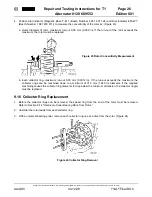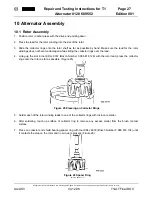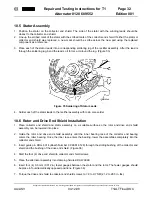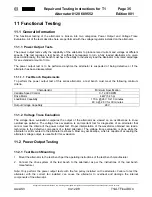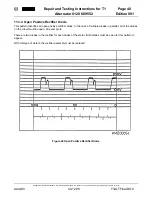
Repair and Testing Instructions for T1 Page 31
Alternator 0120 689 552
Edition 001
All rights rest with Robert Bosch Corp, including patent rights. All rights of use of reproduction and publication rest with R. B. Corp.
UA/ASV
04.12.98
T1ALTFinal.DOC
2. Coat the keyhole shaped surface of the rectifier with adhesive. (Figure 32)
3. Place the rectifier seal ring onto the keyhole shaped surface of the rectifier. Make sure the seal conforms to
the shape of the keyhole.
4. Once the adhesive has cured, place the rectifier into the collector end shield. Make sure the solder lug of
the W Terminal passes into the correct position of the rectifier assembly.
5. Install the insulating washer, flat washer and nut to terminal studs B+ and D+. (Figure 33)
6. Install flat washer and nut onto terminal stud B-. (Figure 33)
7. Check that the soldering lug of terminal W is still in the proper location of the rectifier assembly.
8. Torque terminal stud nuts B+, D+ and B- to:
a. Terminal B+ and B-........ 10 to 13 Nm (88.5 to 115 in. lbs.)
b. Terminal D+ ................... 2.4 to 3.2 Nm (21.2 to 28.3 in. lbs.)
9. Install the flat washer and second nut to terminal studs B+, D+ and B- and torque to:
a. Terminal B+ and B-........ 10 to 13 Nm (88.5 to 115 in. lbs.)
b. Terminal D+ ................... 2.4 to 3.2 Nm (21.2 to 28.3 in. lbs.)
10. Install the three (3) rectifier mounting screws and torque to 1.3 to 1.7 Nm (11.5 to 15 in. lbs.).
11. Solder the soldering lug of terminal W to the solder pad of the rectifier assembly with rosin core solder.
(Figure 34 )
Figure 33 Terminal B+, B- and D+ Assembly
Figure 34 Rectifier Mounting and
Soldering of Terminal W










